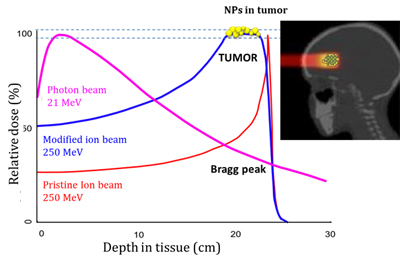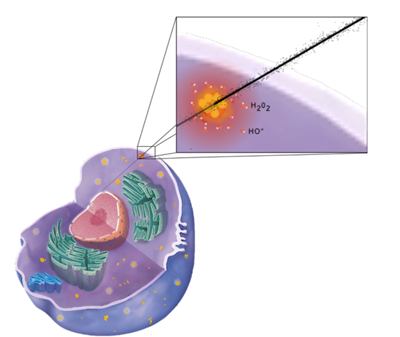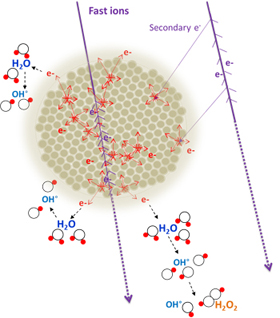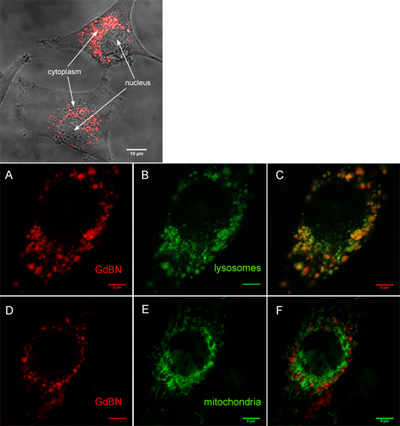Home > Research Teams > Nanomedicine and Biophotonics (NanoBio) > Nanomedicine and Hadrontherapy
Nanomedicine and Hadrontherapy
The group’s activity focuses on the study of the combined effects of nanoparticles (NPs) and irradiation by medical beam fast ions (hadron therapy: use of carbon ions, proton therapy using protons) (Figure 1).

- Motivation- amplification of the ion radiation effects in the tumor
The hadron therapy is based on the use of ion beams to irradiate and eradicate tumors. Fast ions, contrary to high-energy photons (i.e. conventional X ray radiotherapy X), release most of their energy at the end of the track (Bragg peak). This prevents tissue damage behind the tumor. Moreover, the carbon ions are three times more efficient than photons. Thus, this method is used to treat radioresistant tumors and/or tumors located in sensitive tissues such as the brain, neck and eye, as well as pediatric tumors. A major limitation of hadron therapy is the dose deposition which is generated in healthy tissues located in front of the tumor.
A new strategy based on the combination of nanoparticles with fast ion irradiation has been developed by the group to improve the performance of hadron therapy. In particular, we have shown that the addition of nanoparticles of high Z (platinum, gold or gadolinium) increases the efficiency of carbon ion radiation. In addition, the use of MRI active nanoparticles opens up the perspective of treatment improvement, but also the diagnosis of the tumor with the same compound (theranostics).
Therefore the group combines experimental methods to quantify and classify products and protocols, as well as understanding the nanoscale mechanisms involved, with the aim of predicting and controlling the effects.
Our studies focus on:
- in vitro studies of the NPs / ion radiation combined effects (probes: mammalian and human cells) (Figure 2);

- amplification of radiation effects in cells
- from Porcel et al, Nanomedicine : Nanotechnology, biology and nanomedicine 2014
- Investigation of the nanoscale mechanisms (probes: plasmids in solution or lyophilized) (Figure 3)

- Nanoscale mechanisms
- from Porcel et al, Nanotechnology 2010
- Study of the combined effects NPs / radiation in the most radio-resistant bacteria
- Nanotoxicity in eukaryotic and prokaryotic cells
- Uptake and localization of NPs in cells (Figure 4)

- Nanoparticles uptake and localization
- from Stefancikova et al, Cancer Nanotechnology 2014




